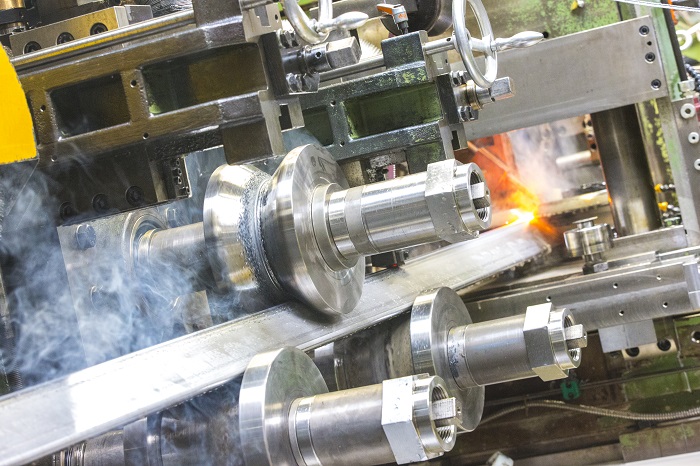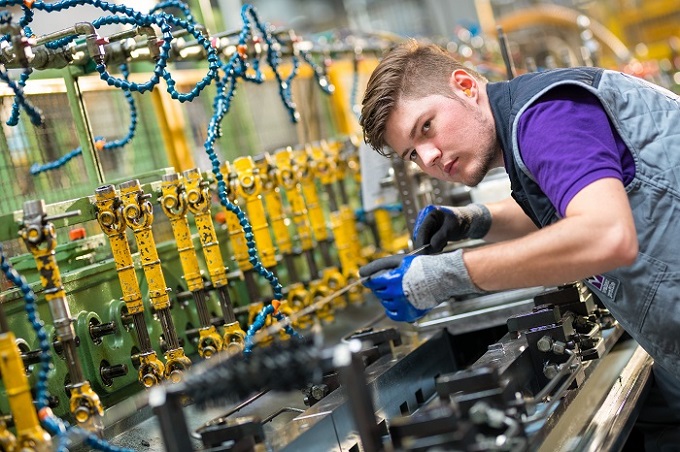New Steel for Mechanical Engineering - 5 Types you should know
So the search for the optimal material for your new component is underway, and you've decided on steel instead of aluminum. Great choice – but now you're probably wondering how the heck you're supposed to choose the right type of steel from the 2,500 plus varieties out there. It's astounding just how many types and grades of steel there are, each with specific properties and suited for particular uses. You'll also be weighing cost-efficiency against innovation potential and the quality standards needed for your particular product development process.
Since we work with different steels every day, we can help you narrow down your search. In this article we'll introduce you to 5 steels which we think, due to their durability, quality and innovative strength, will help shape mechanical engineering in the coming years.
1. Ultra high-strength Steels (UHSS)
For a long time, weldability and high ductility were the decisive advantages of steel. In cases where these properties were insufficient for today's requirements, UHSS (ultra high-strength steels) were developed. These are particularly wear-resistant, among other things, but have somewhat reduced ductility as a trade off. Even so, UHSS are still cold-formable and weldable.
Ultra-high-strength steels are among the most important of the new steels for mechanical engineering and are used in a wide variety of industries.
Popular Shapes & Grades
- UHSS are alloy steels with a higher minimum tensile strength.
Typical Properties
- wear-resistant, hard, tough
- high heat resistance
Common Uses:
Ultra high-strength steels are particularly well known in lightweight construction, particularly in aerospace and in aircraft and vehicle construction. In other words, wherever weight needs to be saved and high strength is still required. UHSS is also the top choice, whenever guide tracks are needed, since high-wear resistance is needed: when telescoping, for example. The same applies to all material-carrying machines, where certain particles have to flow through the component without having an abrasive effect: the filling pipe of a combine harvester, for example.
2. New Structural Steel (mild Steel?)
You know how it goes in the world of business: there's always a newer better way of doing things, and if you lag behind, you'll quickly fall by the wayside of your competitors. The same also applies to steel manufacturers, who need to keep impressing designers and product developers with the new and improved materials. This brings us to a category we'll simply call New Structural Steel for mechanical engineering, since it is a particularly popular and widely used steel grade.
Popular Shapes & Grades
- Unalloyed and low-alloy structural steels
- Weatherproof structural steels
-
High-strength (already covered with UHSS)
Typical Properties
- Excellent weldability and punchability
- High ductility (formability)
Common Uses:
We often encounter new structural steel (mild steel?) in everyday life, as it is often used for furniture and in the building & construction sector. Structural steels are also widely used in industrial technology, e.g., in guide rails for elevators.
3. Green Steel
We are still at the beginning of the development of Green Steel, but the first pioneering projects have already begun. Although it'll probably be some time before CO2-free steel is commercially viable, we still see it as the steel of the future of mechanical engineering.
Popular Forms & Grades
- CO2-reduced or low-CO2 steel: increasingly being offered by steel manufacturers
- CO2-free steel: still not readily available on the market, and mostly sold out
Typical Properties
- In terms of chemical composition, green steel has the same properties as all other steels
Common Uses:
Since the production of green steel is still in its infancy, this material is currently used very little. Production is still too limited to allow for wider availability. Green Steel is an important step on the road to CO2 emissions in the manufacturing chain - the excellent recyclability of steel in general also adds to the environmental benefits. We all feel it: something is happening and we're excitedly following the latest developments. Stay tuned!
4. Stainless Steel
Some sectors, such as the food industry, would find it difficult to do without stainless steel: it's particularly useful where strict purity requirements must be met. Since there are hardly any significant alternatives, stainless steel has a prominent place on both the lists of old and new steels for mechanical engineering.
Popular forms & grades
- Austenitic stainless steels
- Ferritic stainless steels
- Duplex
- Strain-hardened stainless steel
Typical Properties
- Stainless steels are generally very resistant to corrosion
- Another typical feature is their ductility combined with extremely high strain hardening: the more they are formed, the stronger they become
Common Uses:
In addition to the food industry, stainless steels can also be found in packaging and bottling plants, where strict regulations for cleaning processes also must be observed. In salty coastal environments near the sea, stainless steel is also popular. You'll also find it in tunnel construction, e.g., for subway parts and in rail vehicle construction.
5. Non-ferrous Metals
You might be wondering why we would include nickel and titanium in the list of new steels in mechanical engineering – well, it’s because these special-alloy metals have similar properties and can be used just as well as the "real" steels mentioned above. In mechanical engineering, as well as in other industries, they sometimes represent the only significant alternative.
Popular Forms & Grades
- Nickel
- Titanium
- Copper
- Bronze alloys
Typical Properties
- Specially alloyed non-ferrous metals such as nickel and titanium have special chemical resistance to a wide variety of substances: they are, for example, extremely resistant to acids
- The major disadvantage of these non-ferrous metals is their price, which is quite high in contrast to conventional steels, so that they are usually only used where strictly necessary
Common Uses:
Nickel and titanium are often used in special systems in the chemical industry. A typical area of application for these special-alloy metals is in the production of hydrochloric acid, where they are required in their pure form as carrying parts for draining off the hydrochloric acid.
Conclusion: The Right Material for the right Component
As overwhelming as the considerable number of new steels for mechanical engineering may seem at first, there are advantages to this range of choices: you can find the perfect steel for (almost) every component. We'd be more than happy to help you along the way in your search for the perfect material - don't hesitate to get in touch!
Read more
Similar articles

Is Steel the right Choice for you? Here's what Designers & Product Developers need to know

Green Steel in Roll Forming – The same thing, only greener?


